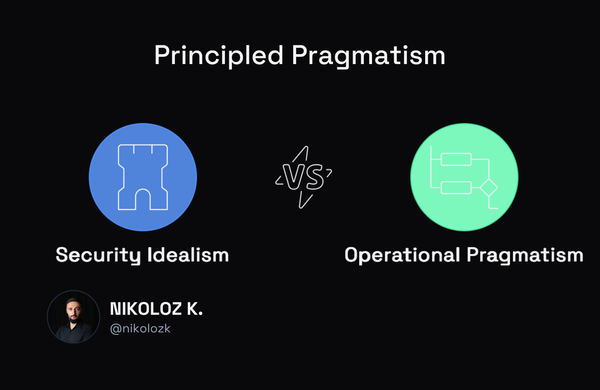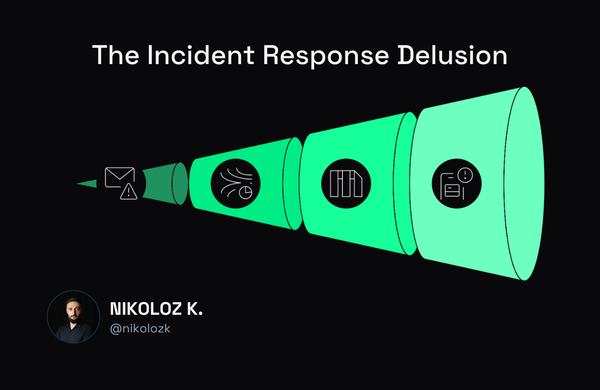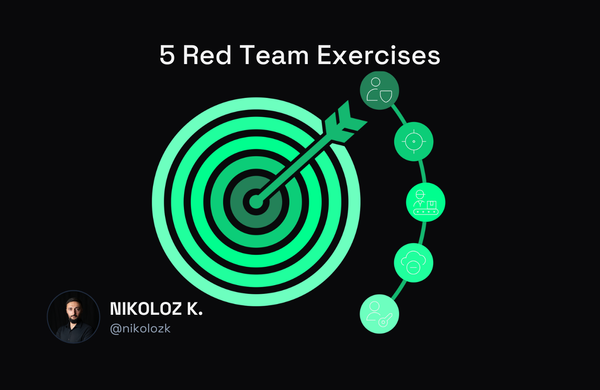5 Mistakes AI Startups Make About Cybersecurity

Nikoloz Kokhreidze
Learn about common mistakes AI startups make in data privacy, DevSecOps, access management, and employee training. Get actionable tips to grow with confidence.
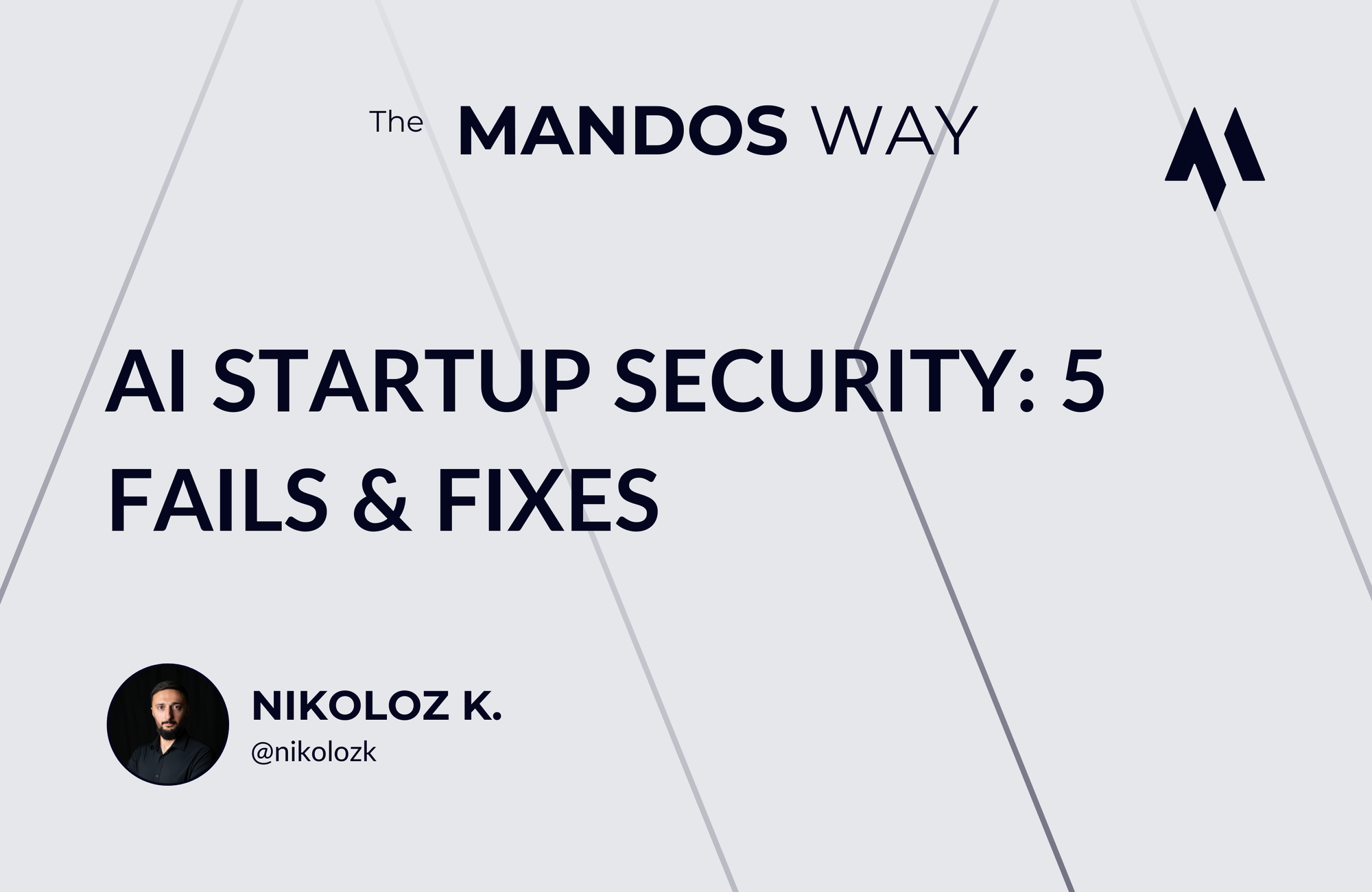
Let's talk about the common mistakes AI startups make about cybersecurity and how to avoid them.
Understanding these pitfalls is crucial. Why? Because cybersecurity is not just about protecting tech.
In fact its mostly about safeguarding your startup's future.
Good cybersecurity practices can prevent financial losses, protect your reputation, and ensure business continuity.
And rewards?
They are significant:
- Enhanced trust from customers and investors
- Compliance with regulations
- Robust foundation for growth
Many AI startups view cybersecurity as either too expensive or unnecessary in their early stages. This oversight can be self-destructive.
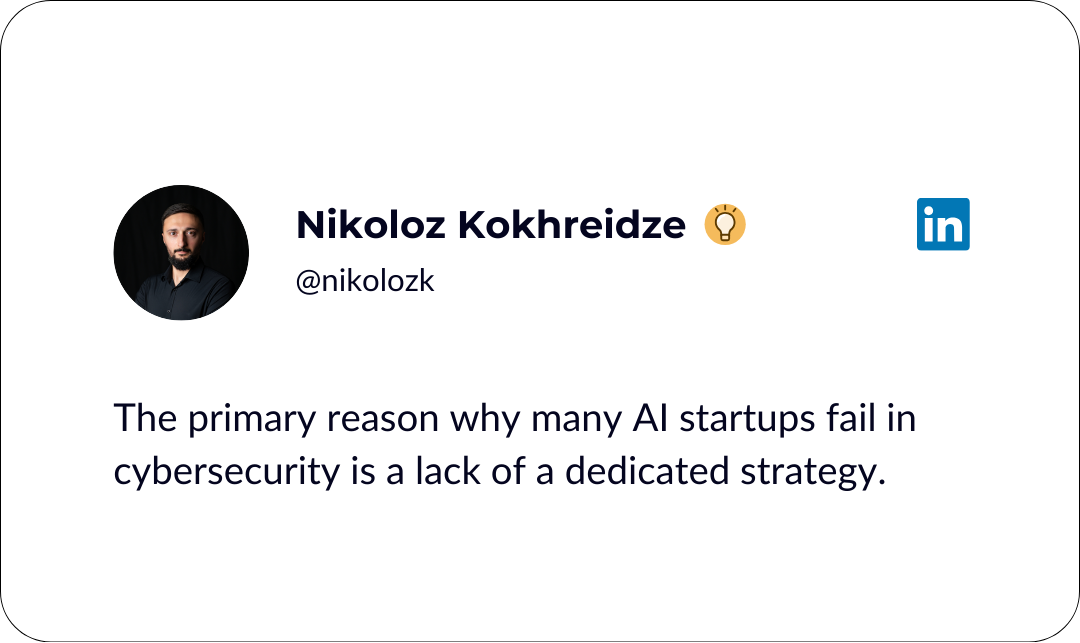
Other reasons include:
- Ignoring security in DevOps (DevSecOps). Not integrating security in development can make the final product vulnerable.
- Poor access management: Not managing who has access to what data and systems can lead to unauthorized access and data breaches.
- Inadequate threat detection and monitoring: Not prioritizing continuous monitoring for cyber threats, leaving systems vulnerable to undetected attacks.
- Neglecting software and system updates: Outdated systems can reach to breaches of you product and IP.
- Failing to focus on employee cybersecurity awareness: Unaware employees can introduce hidden security threats.
But don't worry, there are ways to overcome these challenges:
Step 1: Integrate Security into Your DevOps (DevSecOps)
Integrating security into the development lifecycle of AI systems is crucial for identifying and mitigating vulnerabilities early on.
This approach, known as DevSecOps, ensures that security considerations are not an afterthought but a fundamental part of the development process.
It involves incorporating security checks and vulnerability assessments at each stage of software development, from design to deployment.
This could include automated security scanning tools, code reviews focusing on security, and integrating security testing into continuous integration and deployment pipelines.
Step 2: Implement Robust Access Management Controls
Effective access management prevents unauthorized access to critical systems and data, a common point of exploitation in cyber attacks.
Startups should employ strategies like multi-factor authentication and least privilege access, ensuring that employees only have access to the information necessary for their roles.
Regular audits of access rights are also essential to promptly revoke access when it's no longer needed or when an employee leaves the organization.
Step 3: Implement Threat Detection and Response Systems
Effective threat detection and monitoring are vital for early identification and response to cyber threats.
In an AI-driven environment, where data sensitivity is high, having a proactive monitoring system can be the difference between a minor security event and a major breach. Additionally, AI startups are actively targeted by government sponsored threat actors, a.k.a Advanced Persistent Threats (APTs) due their Intellectual Property.
So what to do about it?
- Deploy Endpoint Detection and Response (EDR) solutions to protect employee equipment from targeted attacks.
- Implement Cloud Security Posture Monitoring (CSPM) tools to gain visibility into security of your cloud infrastructure.
- Establish own Security Operations Center (SOC) or find a Managed Detection and Response (MDR) service provider to support with detection and response.
Not sure which security solution is best for you? I might be able to help reach out.
Step 4: Regularly Update Software and Systems
Regular updates and patching of systems protect against known vulnerabilities. Patching is one of the most basic IT hygiene tasks, but yet hard to implement with 100% accuracy.
Cyber attackers often exploit known vulnerabilities in outdated software.
This involves establishing a routine for updating operating systems, antivirus programs, and other critical software.
It also includes educating the team about the importance of installing updates promptly and maintaining a secure configuration of all software and hardware.
Step 5: Conduct Employee Cybersecurity Training
Well-informed employees can act as a first line of defense against cyber threats.
Cybersecurity training should cover the basics of data protection, identifying and responding to common threats like phishing, and best practices for securing personal and company information.
It should also be regularly updated to reflect the latest threat landscape.
Conclusion
By addressing these five key areas, your AI startup can establish a strong cybersecurity posture.
Remember, cybersecurity is not a technical issue; it's a business challenge that plays a critical role in your startup's growth and sustainability.
That’s all for this week. See you in the next one.
Nikoloz

